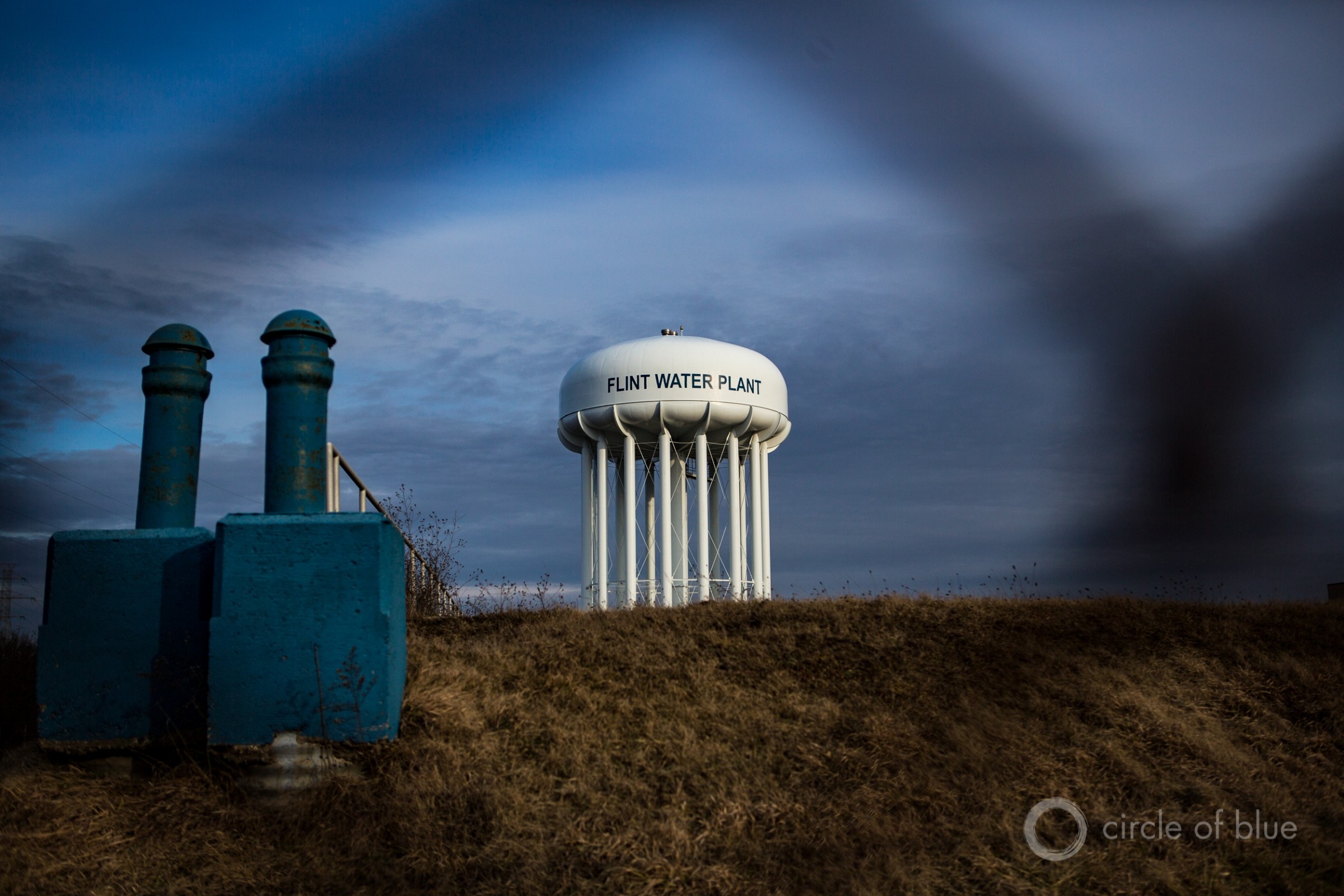In Flint Water Crisis, EPA’s Friendly Relationship with State Regulators Delayed Use of Legal Authority
Despite warning signs, federal authorities were slow to act in Flint, the agency’s internal watchdog says.

The decision by emergency managers in Flint not to protect lead pipes from corrosion when the city switched water sources in April 2014 resulted in a public health crisis that is still unfolding. Photo © J. Carl Ganter / Circle of Blue
By Brett Walton, Circle of Blue
The opportunities were there for federal regulators to help the residents of Flint sooner than January 2016, when the U.S. Environmental Protection Agency issued an emergency order in response to high lead levels in drinking water.
But officials in the agency’s Region 5 office did not take those opportunities, according to an internal investigation by the inspector general’s office that questions the adequacy of the agency’s policies for enforcing drinking water standards.
The 74-page report describes an agency that did not have oversight mechanisms in place to connect the growing number of dots, beginning in May 2014, that something was terribly amiss with the water in Flint after city officials switched sources in April 2014. Those dots include warnings in the spring of 2015 from one of its own scientists that were ignored.
The inspector general’s office says that the decision by Region 5 managers not to use the enforcement and information-gathering tools at their disposal was the result of an avalanche of misinformation and weak resolve.
These failures, the report argues, stem primarily from a relationship with the Michigan Department of Environmental Quality, the state regulatory agency, that was too cozy to produce severe reprimands. The EPA has granted the MDEQ the authority to enforce and monitor drinking water standards, a power called primacy that 48 other states have. The EPA is supposed to be a backstop to ensure that the state does its job, but it failed in this case, the report shows.
“EPA needs to oversee the states, but we found that the partnership [in Michigan] was very collegial,” Jayne Lilienfeld-Jones, a report co-author, told Circle of Blue.
Because of the friendly relationship, Region 5 authorities did not act on their knowledge of inadequate monitoring and staffing at MDEQ, the report states. An EPA contractor’s audit of the MDEQ’s drinking water program in 2010 found that the state was not enforcing parts of the Safe Drinking Water Act because of a lack of money and staff. The MDEQ was not issuing violations for late reporting of test results or the failure to submit reports on testing locations to monitor for lead.
Though these omissions continued through 2015, “Region 5 did not intervene to ensure that the MDEQ’s drinking water program met minimum federal standards,” the report states.
The report lays most of the blame on the Region 5 office, which had direct responsibility for MDEQ oversight, and not officials in the agency’s Washington, D.C. headquarters. Officials in Washington told the inspector general’s office that information coming from the region “lacked a sense of urgency.” Region 5 covers the states of Illinois, Indiana, Michigan, Minnesota, Ohio, Wisconsin, and 35 tribes.
The report’s findings are not a surprise to Manny Teodoro, director of the policy and politics program at Texas A&M University. Teodoro’s research has found that government regulators can be reluctant to enforce drinking water violations against another government entity, such as a public water utility.
“Regulators don’t have the resources to give to cities, especially those struggling financially like Flint,” Teodoro told Circle of Blue. “There’s not much to be gained for regulators, and on an interpersonal level, people” — fellow government officials — “are going to hate you.”
The Region 5 office was not listening to the people of Flint. The office received 87 citizen complaints about the city’s water between May 2014 and January 2016, more than one-third of which were related to lead. Officials did not consider the complaints an indicator of a larger problem, the report states.
The report recommends nine actions the EPA and its regional offices can take to prevent a re-run. The EPA agreed with eight of them, remedies such as: establish incentives for managers to address critical health problems, implement a risk monitoring system that calls out anomalous test results, track citizen complaints, and conduct regular trainings so that employees know the regulatory tools they have.
The one disagreement is over the inspector general’s recommendation that the EPA implement a nationwide, annual verification program to ensure that all water systems are complying with lead regulations, which includes selecting appropriate home testing sites — those known to have lead pipes — and keeping water chemistry at a level that does not corrode pipes. The EPA instead wanted a more limited, trial project.
“They wanted to do a pilot project, and we wanted a full commitment,” Lilienfeld-Jones said. The agencies and the inspector general’s office are attempting to resolve the issue now while the EPA prepares to submit draft revisions to federal lead rules in August 2019.
This is the second report on the Flint water crisis from the EPA inspector general. The first report, published in October 2016, found that the agency had enough information to intervene in Flint seven months earlier than it did.
Brett writes about agriculture, energy, infrastructure, and the politics and economics of water in the United States. He also writes the Federal Water Tap, Circle of Blue’s weekly digest of U.S. government water news. He is the winner of two Society of Environmental Journalists reporting awards, one of the top honors in American environmental journalism: first place for explanatory reporting for a series on septic system pollution in the United States(2016) and third place for beat reporting in a small market (2014). He received the Sierra Club’s Distinguished Service Award in 2018. Brett lives in Seattle, where he hikes the mountains and bakes pies. Contact Brett Walton












Leave a Reply
Want to join the discussion?Feel free to contribute!